Blog
December 10, 2018
Learn about gaming as a service (GaaS) and some best practices by reading through, or click on the topic that interests you most:
What Is GaaS?
Gaming as a service (GaaS) means delivering video games on a continuing revenue model — as a service. This typically includes monetizing games after a sale or in support of a free-to-play model.
How Studios Use Gaming as a Service
We cannot understate the success that the GaaS business model has brought to some studios. More and more studios are transitioning (or exploring) delivering games through this model; the profit margins are massive. Ubisoft, for example, is going all in on GaaS. Even though they’ve released fewer games in recent years, they're significantly extending the sales lifecycle of their games by regularly shipping new content to their titles.
While GaaS brings many opportunities to studios, it also brings new work management challenges. Because GaaS is more than a marketing and distribution model — it fundamentally changes how games are built and shipped. Let’s take a look at the planning realities of a GaaS project.
Back to topGaming as a Service: Matching GaaS Game Goals to Realities
On its best day, successful game development requires constant collaboration and near-instant response to emerging needs. Studios operating under the gaming-as-a-service paradigm require this level of interaction even more.
Studio Goals
Here are three high-level goals for studios that want to succeed at GaaS.
Create Collaboratively — Collaboration is no longer as simple as getting programmers and artists to talk to each other. Now you must work with platform teams, third-party services teams, live operations teams, and so forth to keep the game running 24/7. The best approach is to include all parties involved early on in the project — and continue that collaboration.
Ship Constantly — Stagnation is not an option. GaaS teams must create long-lasting fun through small, frequent value-adds. Think of your studio as the DJ. The game is the dance floor. How do you facilitate an endlessly wonderful dance party for your players? It’s a constant effort.
Respond Instantly — You can listen to, track, and respond to real-time player behavior. The vast amount of telemetry available for GaaS games means that time to market is more critical than ever. When you discover a way to make your game more engaging, you want to ship as soon as possible.
Studio Realities
Shipping a game collaboratively, constantly, and instantly comes with new realities for receiving, managing, and delivering work! Particularly as they relate to demand, capacity, scope, and resources.
External Demand — Demand is not driven solely from internal visionaries, but driven by real-time metrics from actual player usage.
Limited Capacity — Compared to other models (see below), GaaS delivery models are less about optimizing resource utilization (keeping everyone busy at all times), and more about creating a small, fixed, and highly-skilled team that will sustain over time.
Smaller Scope — GaaS releases are more frequent than traditional games, so scope is typically smaller. This requires a new mindset: “How do we add more value with less available time?”
Shared Resources — With common platforms, shared in-game currencies or payment systems, and more, studios are more commonly sharing resources. All of these dependencies — combined with a developing a game that must be available 24/7 — can tangle up projects.
Back to topLearn how 5 leading studios master game production
Common Delivery Methods by Studio Business Model
Before we cover how to streamline your GaaS delivery pipeline, let’s look at a few historically common studio business models and the work management methodologies traditionally attributed to them. You’ll quickly understand why GaaS demands new ways of delivering content.
Gold Master Model
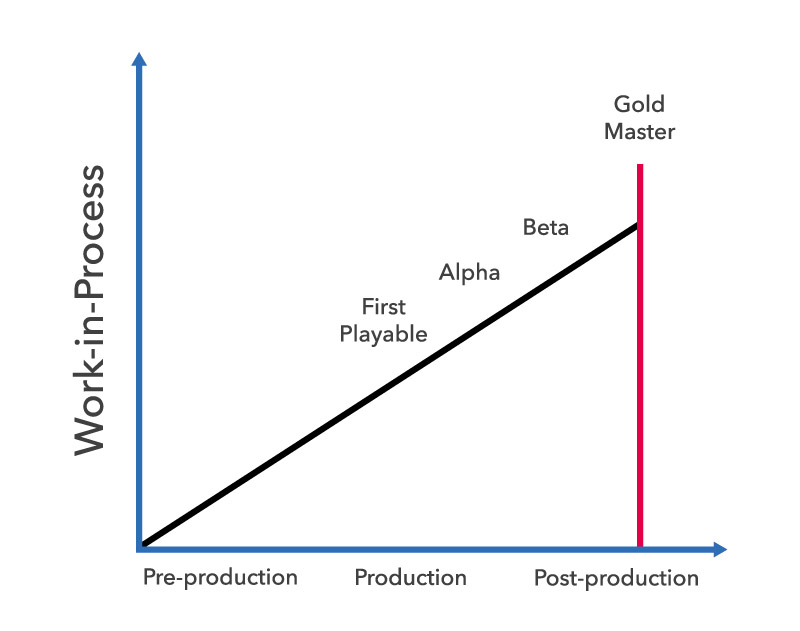
The gold master model has been the most common in AAA game development for a long time. This model is all about hitting that one crucial milestone when the game gets packaged and sold (the so-called “gold master” version of the game).
In this model, a more traditional milestone planning approach makes sense, since the game is often developed in high-level phases going from concept and pre-production through production and release. With such finite phases and milestones, the most common way for teams to plan is through a combination of Gantt charts and Scrum. Obviously, though, this model brings a very high business risk: a studio is investing everything into a single moment — when the game is released. And it’s at this moment when almost all sales are happening… or not happening.
One core issue with the gold master model (business risk aside) is that often all of the features, etc., are not completed according to the initial, extremely massive plan. So crunch time happens, which is a horrible experience for any team member.
Work Delivery? Gantt & Scrum
📘 Related Resource: The Many Merits of Mixing Gantt & Scrum
Episodic Model
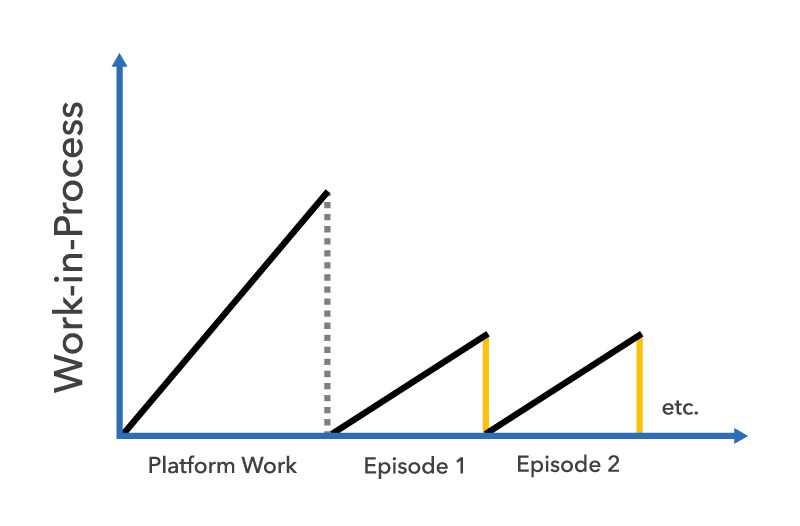
The episodic model is what it sounds like. Similar to a season in a running TV show, studios following the episodic model deliver their games in several episodes instead of one single release. You pay to access the next episode or installment (not unlike an arcade game). If you want to continue on the same path or journey, you pay a little bit more. Or you can decide to buy all episodes at once.
Since the model itself is so iterative, the delivery method is as well. Often, the most suitable model is Scrum (with minor adaptations to sprint lengths, etc.) to ensure episodes are available to players on time.
Work Delivery? Scrum
Gaming-as-a-Service Model
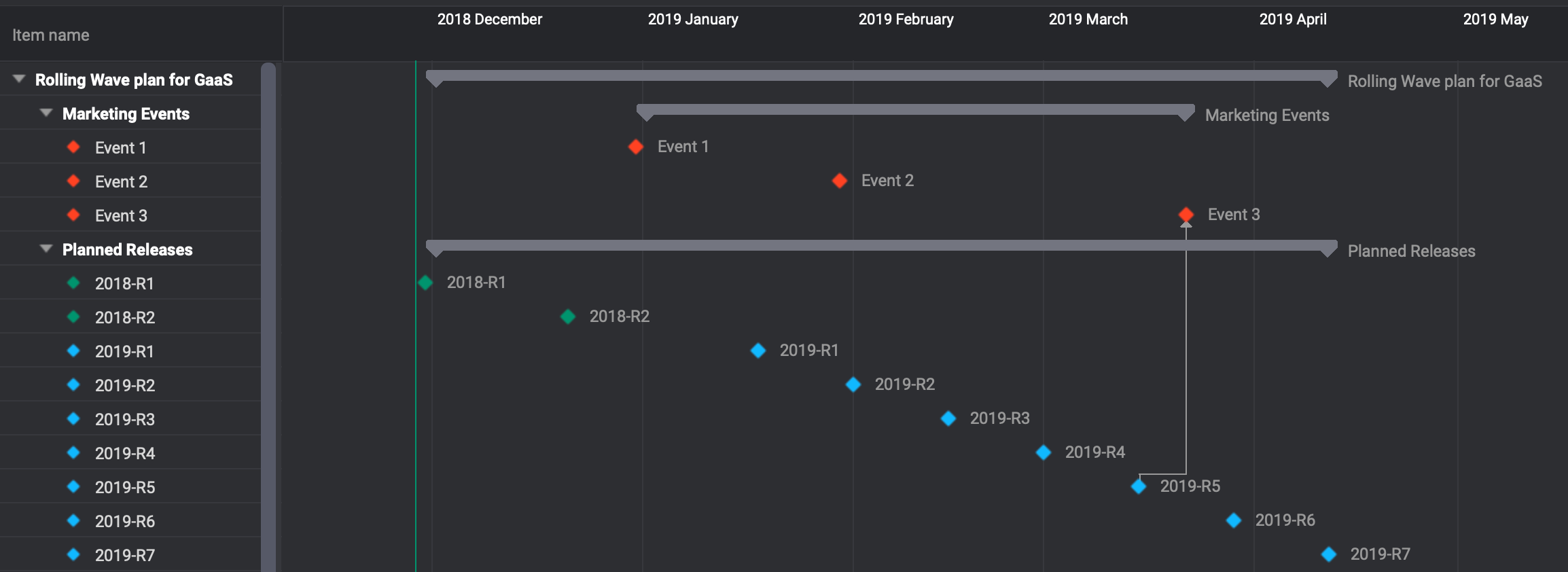
Under the gaming-as-a-service model, studios want to create a game that engages players for a long time. The reason? The more time they spend in your game, the more likely they’ll invest money into the items you offer within it.
For this reason, the team must provide new items, features, levels, environments and so forth on a regular basis to keep that engagement. And even more so — each new item must add to the fun.
It’s a great creative challenge! The studio has to ship content updates and bug fixes to your live game very frequently. And you have to ensure that the gameplay balance and overall experience is always improving.
Events also have a critical role in the GaaS world. Good event management is a key component of success — particularly for games with an eSports element.
The events are interesting from a planning perspective. Their dates must be locked. First reason: so that players know exactly when and where they happen. Second reason: so the marketing team can work on creating anticipation. In that regard, it is somewhat similar to a classic milestone plan. Gantt scheduling, then, makes sense to manage that timeline and its hard dependencies.
At the same time, you have a development team that needs to deliver a continuous flow of content. In which case, a planning method such as Kanban is perfect.
The most suitable planning approach for GaaS, then, is often a combination of Gantt scheduling (with marketing) and Kanban. If you have multiple teams involved in the game development process, they would then often split up their work to different Kanban boards.
Work Delivery? Gantt + Kanban
Back to topWhy Kanban for GaaS Delivery?
Kanban is, in my opinion, critical for helping you deliver a constant flow of value.
Collaboration
A visible Kanban board (whether on a wall or in a tool) makes it immediately clear how work is flowing and where bottlenecks exist. And it aligns everyone on the team, so they can help out when work stalls.
Since Kanban is easy to grasp, it engages team members at all levels of project management aptitude. Artists, marketing managers, legal, etc., can use Kanban boards and understand the basic principles.
Variability
Reason two, it can handle variability. Delivering GaaS means delivering a wide variety of work items. Sometimes there are a few random bugs. Other times you may have a large number of assets to create before a special event. Kanban includes great mechanisms to handle that variability as well as handle multiple different workflows on the same board.
Better Decisions
Finally, Kanban enables just-in-time decision making. If you’re doing GaaS right, you’re getting lots of feedback all the time. What you want to do is make decisions when you have as much information as possible. That means making decisions at the last possible minute. Kanban empowers this. (This is a big difference from the gold master model, in which make many very important decisions very early in the project.)
🔎 Looking to Replace Jira with an On-Premises Option? Try P4 Plan — Free 👇🏽
(Cloud hosting is available, too...)
Back to top
Solving the GaaS Pipeline Puzzle
So, we’ve established new challenges in streamlining your GaaS pipeline and explained why a pivot to a Gantt and Kanban workflow is best suited for shipping a GaaS game with a live ops element. Now let’s go a bit deeper into what I consider the four elements for planning GaaS successfully: milestone planning, backlog structure, real Kanban, and feedback through metrics.
Milestone Planning
Milestones for GaaS are not arbitrary; the primary ones are the marketing events. These are then lined up next to the actual product releases (planned on cadence, like every week, etc.) so that any dependencies can be marked out.
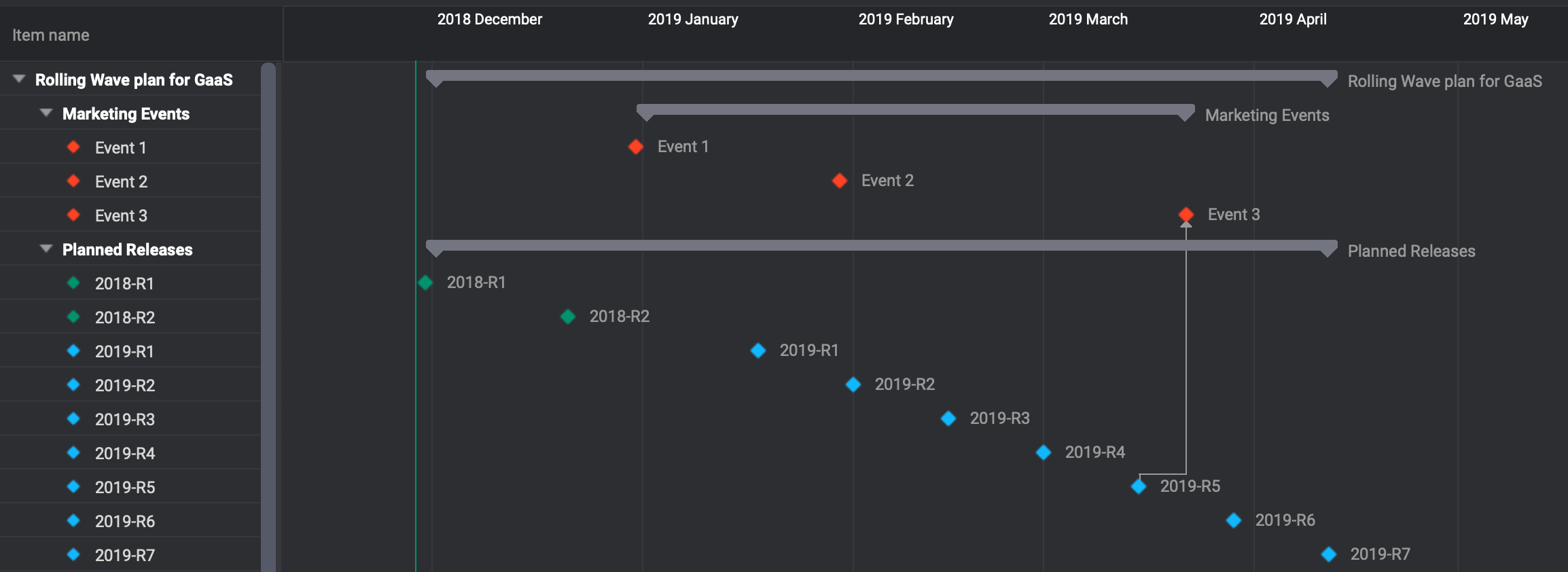
Backlog Structure
With GaaS, you need to build a long-lasting experience for players. The need should be handled in the structure of your product backlog. Give up on structuring around classic epics or stories. Work with a structure that drives what you actually need: The basic tech stack, continuous improvement of features, and, lastly, new items that can be purchased at a steady interval.
Kanban
Set up the Kanban board for your teams to show the actual value-adding steps (NOT the hipster Kanban approach consisting of ‘Not Done’, ‘In Progress’, ‘Done’). Use different lanes for different classes of service (for example, one for new characters and one for new gadgets). Ensure that any dependencies between the items are marked on the board. Use and enforce Kanban WIP limits.
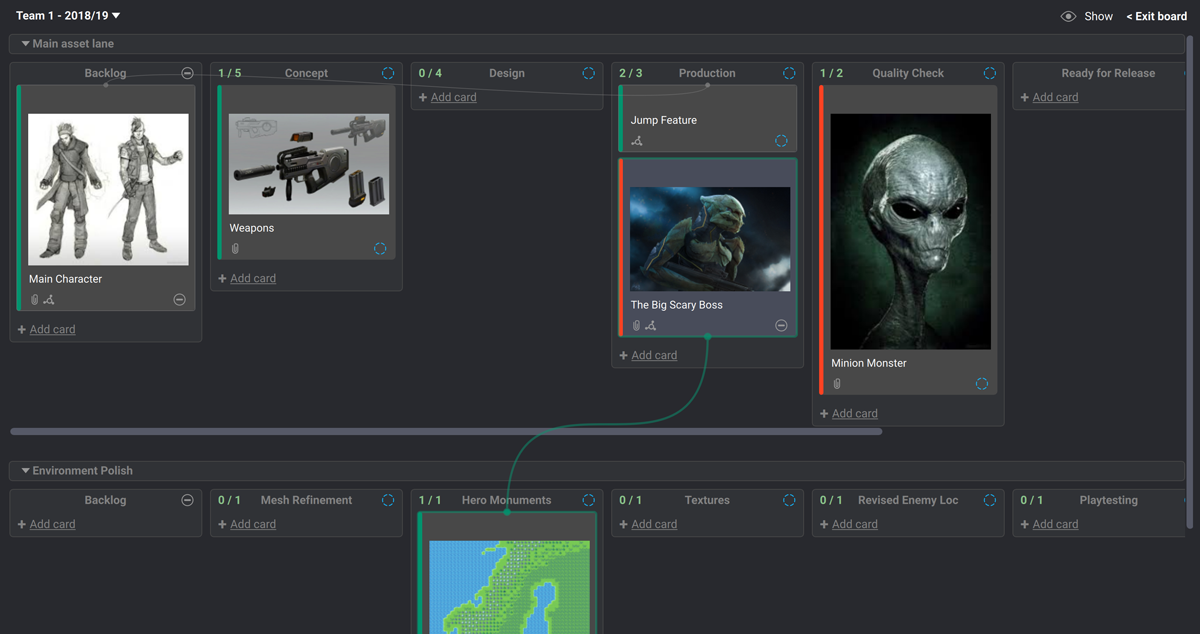
Metrics
There are many things to measure, and only one thing is a given — you will get what you measure. So be careful with what you choose! Don’t pick a single metric or chart you heard another studio uses. Pick the charts and metrics that are important for you, then evolve them alongside your game.
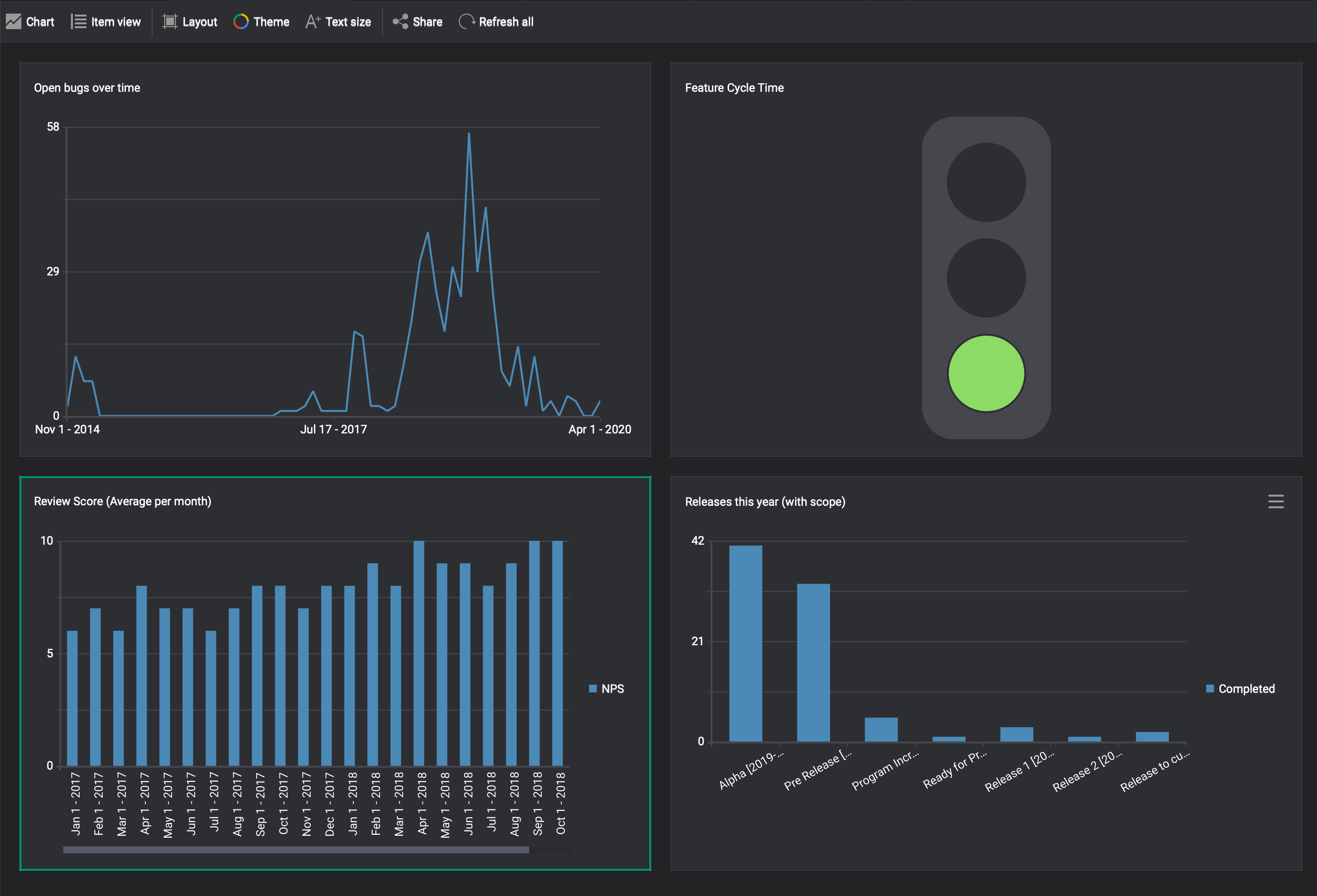
Gaming as a Service Next Steps
The GaaS model is here to stay. Aside from the economics, the model can have other benefits. For example, studios can create sustainable and healthy working conditions while building up massive worlds for players to enjoy for a long time.
But adapting production practices to this new way of shipping games is difficult. It requires a change in culture and planning mindset. By keeping it simple, though, and focusing on the four core pillars mentioned above, you’ll be able to adapt to new feedback and release successfully.
Ship GaaS with P4 Plan (Formerly Hansoft)
With P4 Plan Agile project management tool, you can combine Gantt, Kanban, and Scrum, so teams can work their way. Plus, you get all the dashboards metrics you need to ship modern games.

